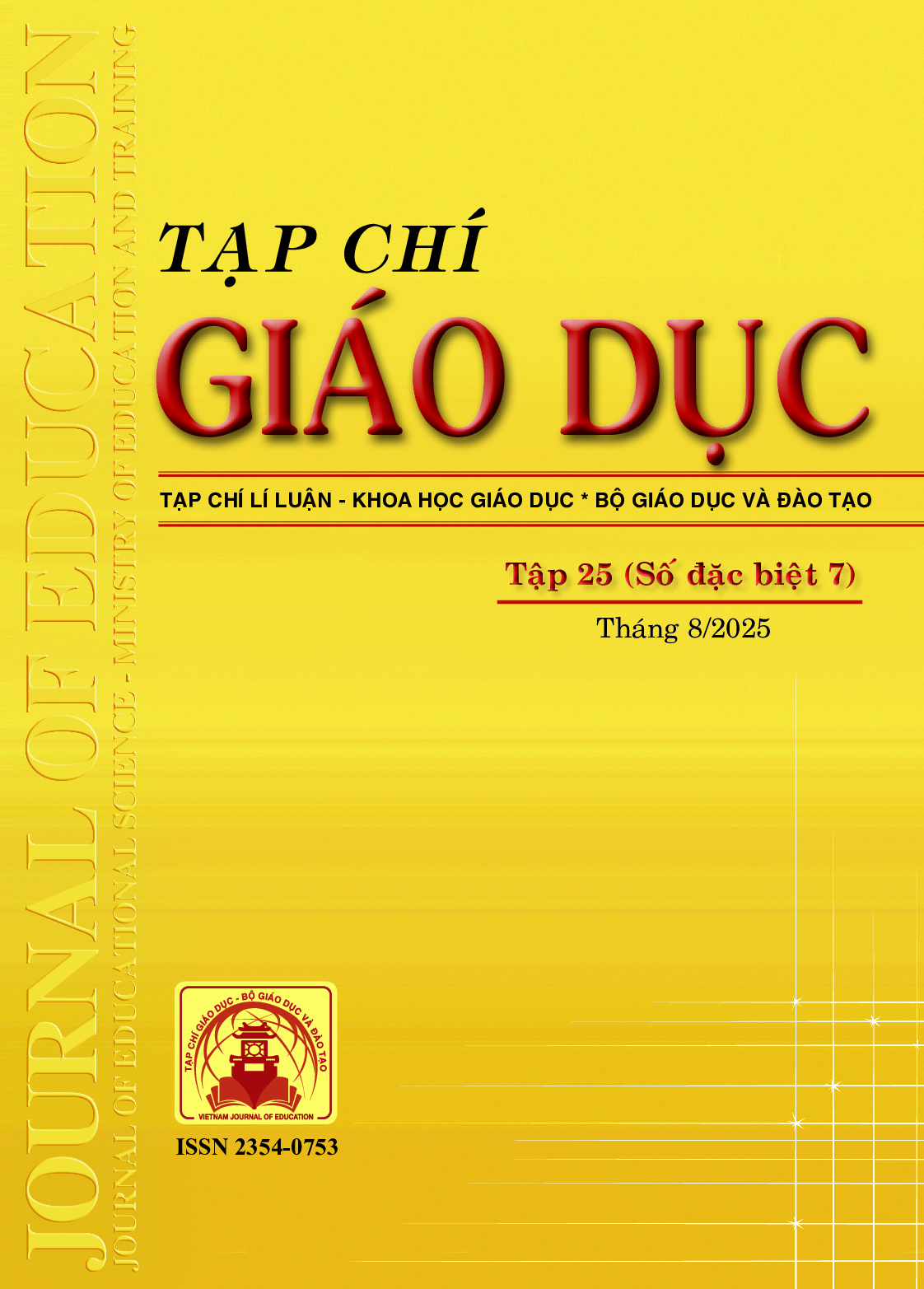Từ STEM đến transdisciplinary learning: Xu hướng giáo dục tích hợp trên thế giới và một số khuyến nghị
Tóm tắt
In the context of global education shifting strongly towards integration to meet the requirements of curriculum innovation and learner competence development in the 21st century, the article uses a qualitative design, combining the method of document analysis and comparative policy analysis to clarify three typical trends of integrated education in the world - STEM/STEAM, interdisciplinary, and transdisciplinary learning. Based on the theoretical analysis framework, the authors conducted a case study in Vietnam, focusing on the current state of policies, capacity of the program organization, and teaching staff in implementing integrated education models. Based on the findings from international analysis and domestic cases, the article proposes feasible reform recommendations, suitable for national conditions and sustainable development orientation. The research results contribute to providing academic and practical arguments for planning integrated education policies in Vietnam in the context of transforming the education system towards openness, flexibility, and competency orientation
Tài liệu tham khảo
Ban Chấp hành Trung ương (2013). Nghị quyết số 29-NQ/TW ngày 04/11/2013 về đổi mới căn bản, toàn diện giáo dục và đào tạo, đáp ứng yêu cầu công nghiệp hóa, hiện đại hóa trong điều kiện kinh tế thị trường định hướng xã hội chủ nghĩa và hội nhập quốc tế.
Beane, J. A. (1997). Curriculum integration: Designing the core of democratic education. New York: Teachers College Press.
Bộ GD-ĐT (2018). Chương trình giáo dục phổ thông - Chương trình tổng thể (ban hành kèm theo Thông tư số 32/2018/TT-BGDĐT ngày 26/12/2018 của Bộ trưởng Bộ GD-ĐT).
Drake, S. M., & Burns, R. C. (2004). Meeting standards through integrated curriculum (pp. 18-25). Alexandria, VA: ASCD.
Halinen, I. (2018). The new curriculum in Finland: A transdisciplinary approach to learning. In M. Matthes, L. Pulkkinen, C. Clouder, & B. Heys (Eds.), Improving the quality of childhood in Europe (Vol. 7, pp. 75-89). Brussels: Alliance for Childhood European Network Foundation.
International Baccalaureate Organization (2018). Transdisciplinary learning in the PYP: The learner, the learning and the learning community (pp. 3-5). The Hague: IBO.
International Baccalaureate Organization (2021). PYP: From principles into practice - The learner in the enhanced PYP (pp. 5-8). The Hague: IBO.
Kang, J., & Jin, S. (2019). A Meta-Analysis on the effects of STEAM education as an education policy of Korean governments. Journal of the Korean Chemical Society, 10(12), 205-213. https://doi.org/10.15207/jkcs.2019.10.12.205
Margot, K. C., & Kettler, T. (2019). Teachers’ perception of STEM integration and education: A systematic literature review. International Journal of STEM Education, 6(1), 2-17. https://doi.org/10.1186/s40594-018-0151-2
National Research Council (2011). Successful K-12 STEM education: Identifying effective approaches in science, technology, engineering, and mathematics (p. 19). Washington, DC: National Academies Press.
Nicolescu, B. (2002). Manifesto of transdisciplinarity (K.-C. Voss, Trans.) (pp. 44-46). Albany, NY: State University of New York Press.
Sanders, M., & Wells, J. (2005). STEM graduate education/research collaborator. Paper presented to the Virginia Tech faculty, Virginia Tech.
Singapore Ministry of Education (2024). Singapore’s educational reforms: Toward holistic outcomes.
Skinner, K. L., Hyde, S. J., McPherson, K. B., & Simpson, M. D. (2016). Improving students’ interpersonal skills through experiential small group learning. Journal of Learning Design, 9(1), 21.
Yakman, G. (2007). STEAM education: An overview of creating a model of integrative education. In PATT-19 Proceedings (pp. 6-15). Salt Lake City, UT.
Đã Xuất bản
Cách trích dẫn
Số
Chuyên mục
Giấy phép

Tác phẩm này được cấp phép theo Ghi nhận tác giả của Creative Commons Giấy phép quốc tế 4.0 .












